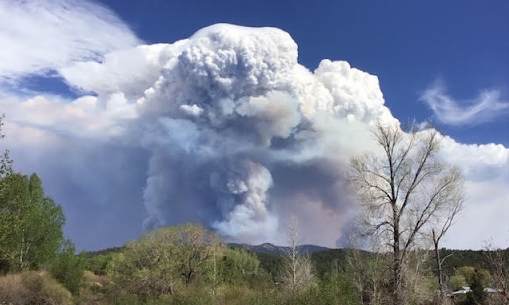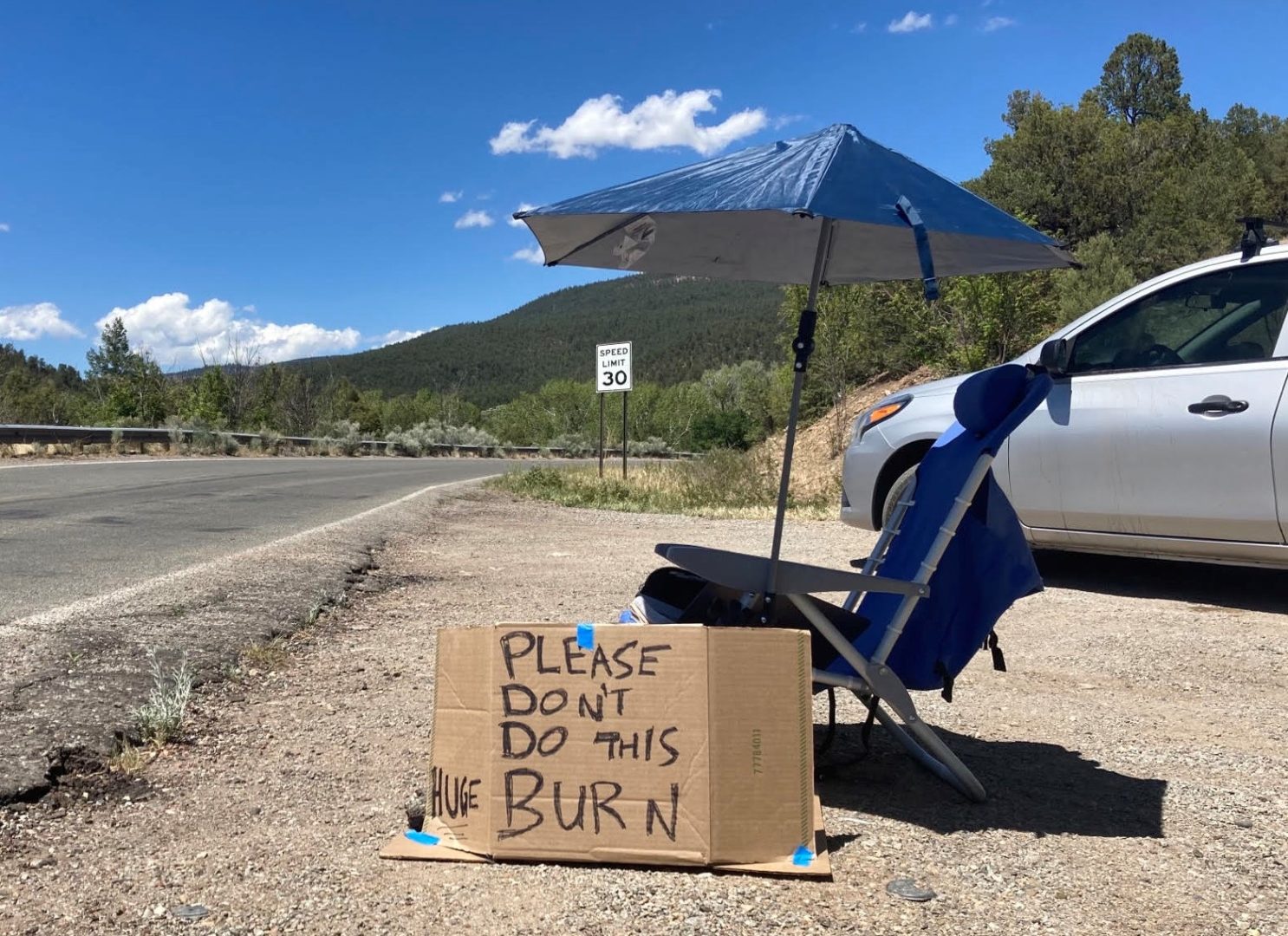|

|

|
Hermits Peak/Calf Canyon Fire, May 15, 2022. Photo: Emmy Koponen
|
|
Hermits Peak/Calf Canyon Fire -- Forgive But Don't Forget
|
|
|
If you can find it in your heart some day to forgive what has been done to our forest and communities by the actions of the Forest Service, that's great. But please do not forget.
|
According to their own account, the Forest Service first responded to fire in Calf Canyon from the burning piles on April 9. They put a containment line around the fire. On April 19, the piles were burning again, and it was declared a wildfire after the high wind event of April 22. Until May 27, the Calf Canyon Fire was designated by the Forest Service as being under investigation. Why did it take so long for the Forest Service to tell us what the cause of the Calf Canyon Fire was?
|
That our local Forest Service created a megafire with two escaped prescribed burns, and that the fire has burned over 315,000 acres, destroyed entire communities, altered a traditional way of life, and has left so many displaced and homeless, is not something we should ever forget. We should never allow this to happen again.
|
The Forest Service is planning to cut trees and carry out prescribed burns on many square miles of forest outside of both Santa Fe and Los Alamos, starting fairly soon. After trees are cut, they are chopped up, and then the resulting slash is burned in pile burns. Usually tree cutting work orders in this area call for over 90% of standing trees to be cut in the sections where thinning occurs, so a very large number of slash piles are created that need to be burned. Burning slash and dead and downed wood is also done in broadcast prescribed burns, and almost always repeated follow-up prescribed burns are carried out.
|
There are many opinions on whether tree cutting and prescribed burning projects out in the forest should be done at all, and/or to what extent they should be done. It’s a cost/benefit analysis. But the Forest Service has not done the cost/benefit analysis.
|
During the analysis of the Santa Fe Mountains Project, which has recently been given draft approval, not only was the possibility of an escaped prescribed burn not factored into the analysis, such a possibility was never even mentioned. Why? We knew from the Cerro Grande Fire that prescribed burns can and do escape, and the results can be devastating.
|
Current research from independent scientists has found that tree cutting and burning treatments in forests do not necessarily reduce the impacts of wildfire, and that forests that have not been previously burned tend to burn less intensely in a wildfire. So these types of treatments are questionable at best, even if there was not the risk of an escaped prescribed burn. And the smoke from frequent prescribed burns is very damaging to public health. We do know that fire hardening of homes and the surrounding 200 feet does substantially help protect homes from wildfires.
|
The Forest Service has announced that they intend to pause prescribed burn operations for 90 days, during the season when prescribed burns are rarely done anyway, in order to re-evaluate their prescribed burn program. Then there will most likely be some public relations efforts, some new regulations, and widespread burning will start up again.
|
On Sunday, there were two articles in the Santa Fe New Mexican opinion section by supporters of the intensive tree cutting and prescribed burn program, one by a trio of scientists. It appears that the intention of these articles was to begin the process of rehabilitating the paradigm of aggressive tree cutting and burning of our forests -- and to re-educate us to accept what the Forest Service and their collaborating agencies decide is best for our forest and for our communities. Let's not be lulled into forgetting the disaster that has been brought upon us.
|
Unless we stand for our forest and for our communities, another conflagration like the Hermits Peak/Calf Canyon Fire could easily happen. A few months ago, the Forest Service committed to increase thinning and prescribed burn treatments up to four times the current levels. At the same time, they are seriously understaffed. This is a recipe for more escaped burns.
|
The Forest Service must do a genuine cost/benefit analysis of their tree cutting and burning program. For the two large-scale local cutting and burning projects in planning that means doing due diligence and completing full analysis, an Environmental Impact Statement, for both projects. It also means considering newer research by scientists that are independent of the Forest Service and their collaborating agencies. And they must listen to and genuinely respond to the concerns of the public.
|
Always remember what has befallen us......even while there is so much else going on in our lives. Please email our elected Representatives and request that they stand for the forest and for us, and urge the Forest Service to not return to the dangerous path they have been on. Ask them to tell the Forest Service to change their operational paradigm to one of conscientious conservation, utilizing comprehensive analysis and a full range of the best available science. The forest matters and we matter.
|
May all who are impacted by the fire stay safe and find a way to recover, as much as possible.
|
|

|
Protest of planned back burns in the Pecos Wilderness, June 1, 2022. Photo: Joey Smallwood
|
|
|
|